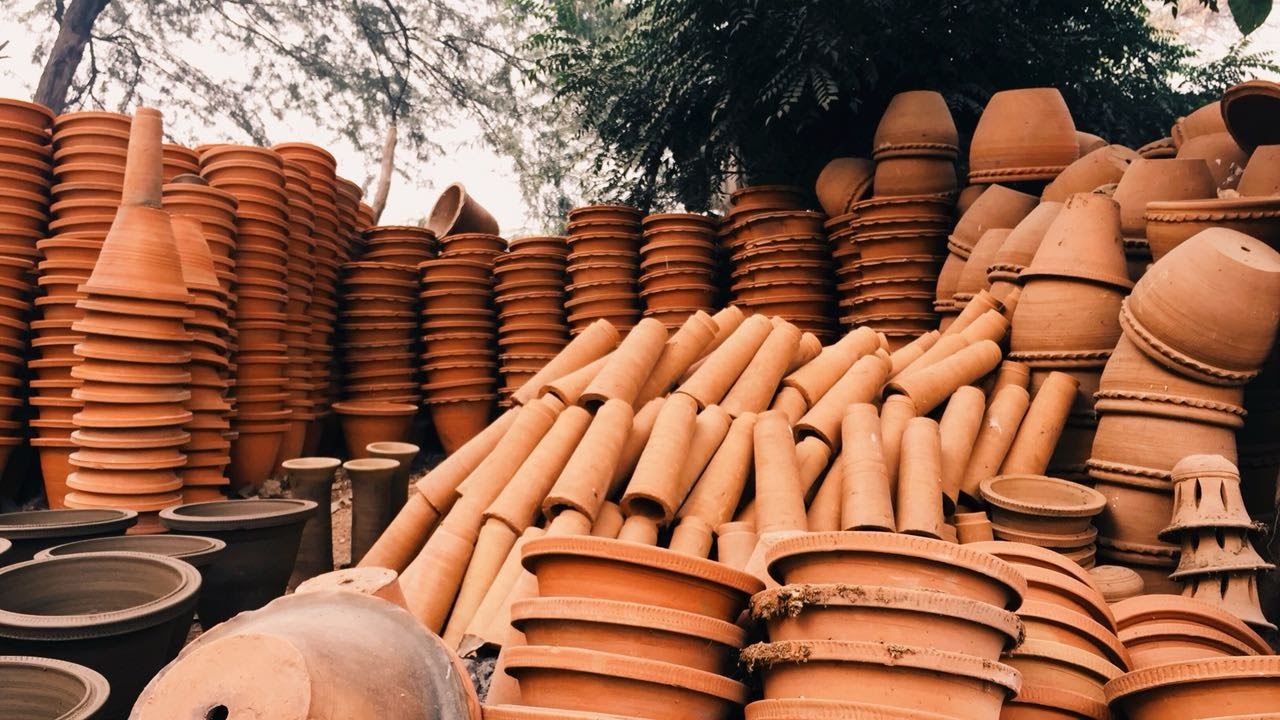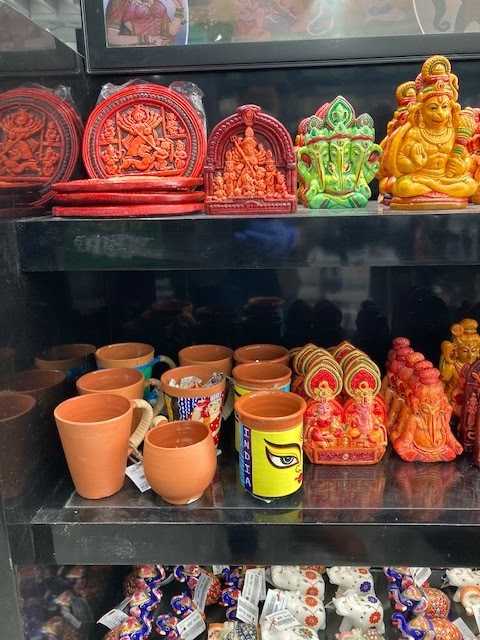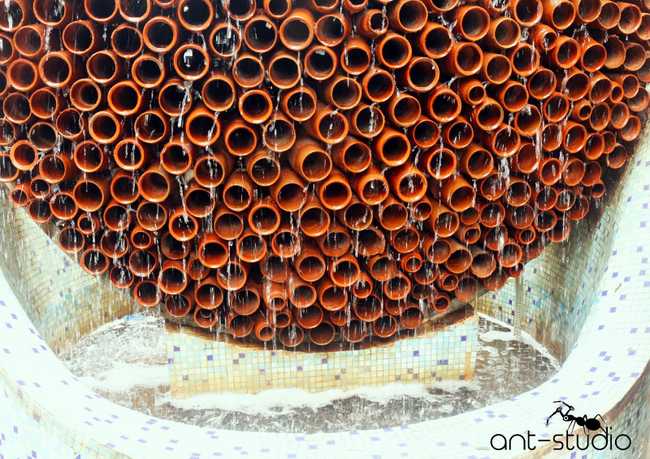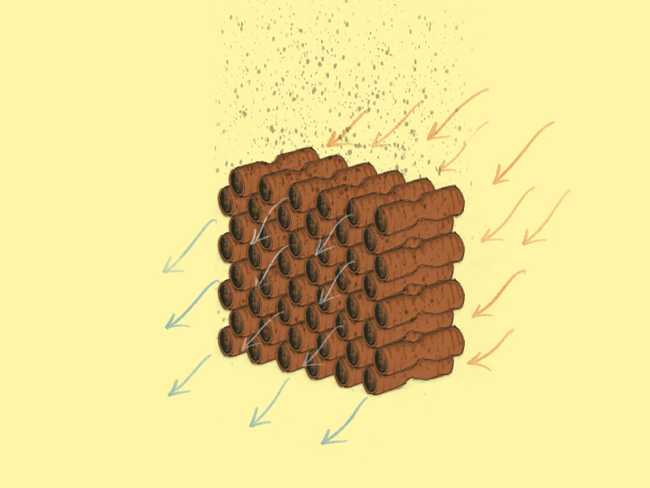
Terracotta as Technology: Then and Now
By Ashawari Chaudhuri
Material objects are rarely ends in themselves. They are reflections of how we live, and how we imagine and work with our environment. When it comes to managing heat and using it productively through material objects, the use of clay in making utensils and for building houses has been one of the most ancient forms of technologies used in South Asia.
From coarse, grey coloured clay pots used for cooking, to glazed, intricately painted earthenware for storing water and grains, archaeological excavations have unearthed a wide variety of clay objects dating as early as the 3rd century BCE.1
The shape, size, and decorations on the pots tell stories about how people lived and worked millennia ago. For instance, based on painted grey ware found during excavations carried out in Purana Quila in Delhi in the 1950s, historians have concluded that they were pastoralists-cum-agriculturalists, living in the region as early as 1000 BC
If the pots were used for storing grain, their rims were larger than the ones that were usually used for storing water. Further, every region/ state in India had and continues to have specific forms or paintings and decorations that have been handed down through generations.2

Excavations of earthenware from the Early Medieval Period. Photograph by Oishi Roy.
Clay pots are still widely used in cooking and storing water because their porosity controls heat differently from their metal counterparts. When water is stored in these pots, their porous surfaces absorb the heat from inside and release it outside, keeping water cool. Putting this cooling property of clay to use in everyday living, houses are built with it in several parts of rural India. During the peak of summer, people often sprinkle water on the outer walls of these houses to relieve themselves from the excruciating heat. Porosity does not only help with cooling. It is this same property of clay that is applied in utensils for cooking as well. Heat and moisture move uniformly inside the earthen vessels, keeping the food tender, nutritious, and flavourful.
Although it is rare to come across clay houses in urban India, one can still see terracotta mugs, utensils, and decorative items in shops. Clay cups are regularly used in tea stalls in cities.

At a shop in an Indian city. Photograph by the author.
With heat waves ravaging several parts of Asia and the world in recent years, scholars, environmentalists, politicians, and architects have been attempting to mitigate this global problem using local materials and expertise. One such example is the beehive outdoor cooling unit constructed by the Ant Studio, led by its founder Monish Siripurapu. Ant Studio is an architecture start-up that experiments with locally available and environmentally sustainable materials for their constructions and installations. By using local materials, they address emergent problems like increasing heat and the destruction of buildings during the monsoons.
One of their first installations was at the Deki Electronics factory in Noida, a city close to Delhi. The genset (diesel generator) in the factory was placed at the entrance that radiated hot air passing at high velocity. It increased the temperature of the area to up to 50 degrees Celsius. Based on the principle of evaporative cooling techniques, Ant Studio built a round structure resembling a beehive, using terracotta cones. Evaporative cooling techniques use water along with local materials to make the environment cooler. "We kept the three "Es" in mind ---- ecological, economical, and esthetic---while conceptualizing and constructing this structure", explained Siripurapu during a Zoom interview.

Reproduced with permission from Ant.Studio.
This outdoor cooling solution is ecologically sustainable because it uses very little electricity, compared to cooling technologies like air conditioners. Minimal electricity is required to run the water pump that uses recycled water from the factory. It is economical because it uses local materials like clay cones that are inexpensive compared to plastic or steel. These installations not only make use of clay, which is an unusual material for outdoor cooling technologies, but they also help revive the art and craft of pottery.


Reproduced with permission from Ant.Studio.
Finally, the technology is esthetic because generators are usually in the setback area but the creative design of this outdoor cooling unit makes it a piece of art along with cooling the immediate environment. The temperature and speed of the air before and after passing through the installation were measured. The air that was around 50 degrees Celsius and moving at a velocity of 10 m/sec became around 36 degrees Celsius with a flow of 4 m/sec. The cooler temperature around the installation was measured on a day when outside temperature was around 46 degrees Celsius.
Evaporative cooling techniques using clay objects have been used in cultures across the world, including ancient Egypt and Rome. With global warming making heat an environmental crisis, perhaps it is time to tinker with some of the time tested, ecologically sustainable materials like terracotta in building technologies for everyday living.
